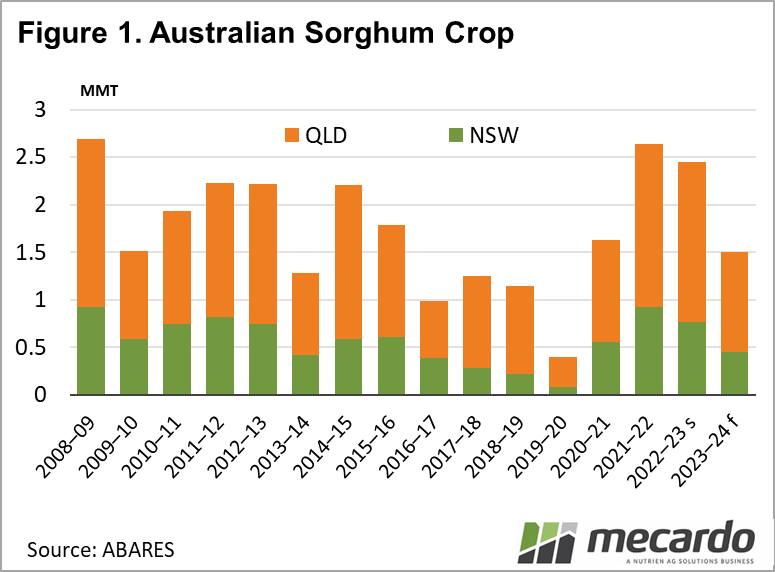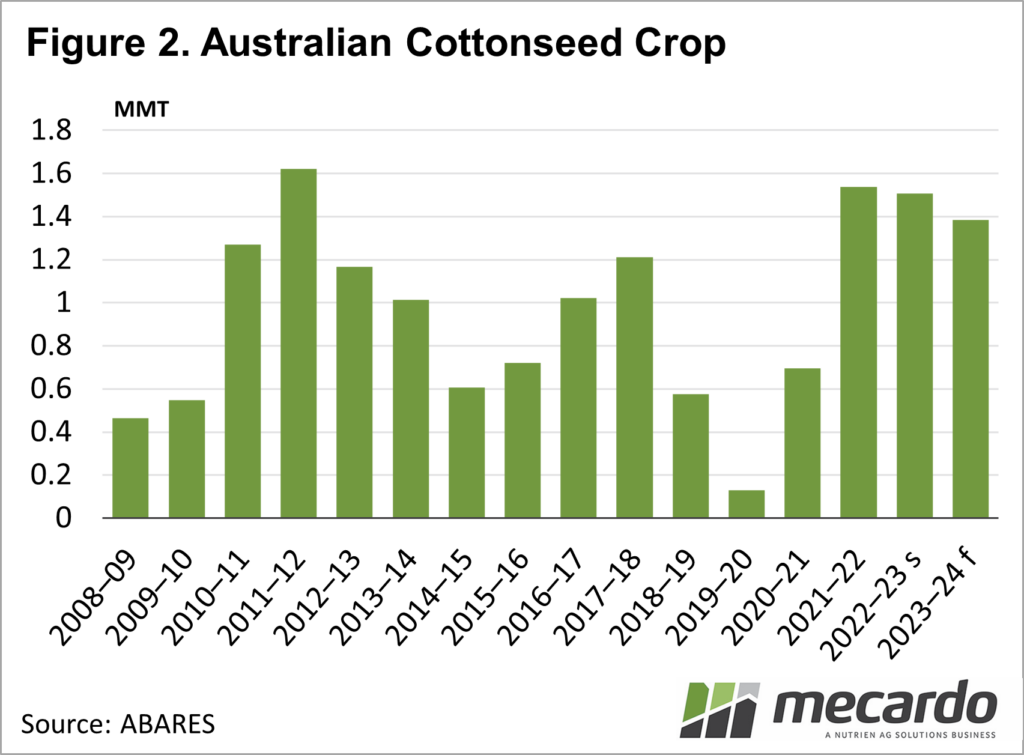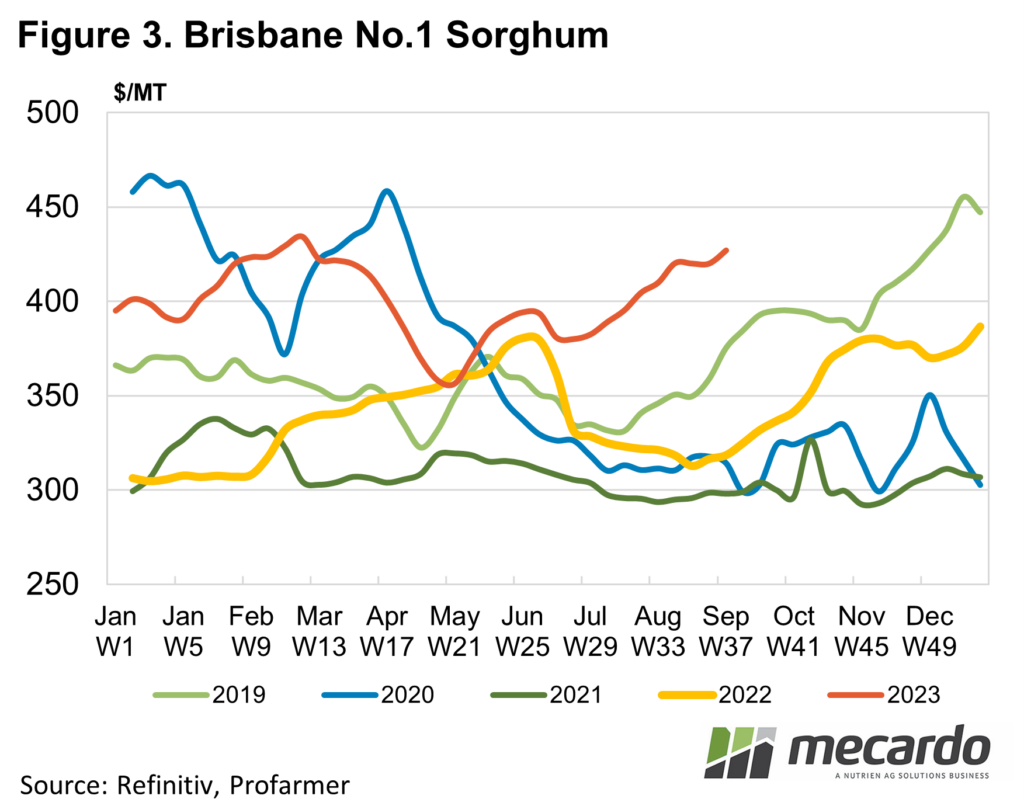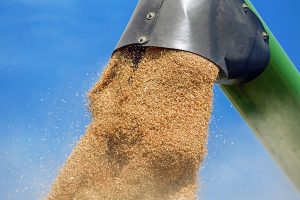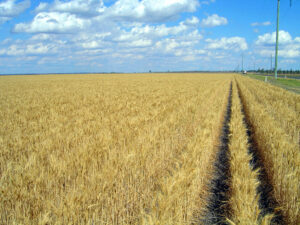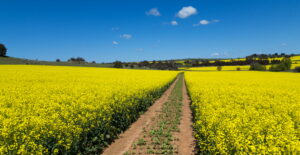Like the winter cropping regions, the summer croppers also benefitted from La Niña over the last few seasons, producing a couple of bumper crops in a row. This has added to abundant feed supplies and kept a lid on pricing. Forecasts are for tighter stocks this year.
After the winter crops are done and dusted, the summer crops produced in Northern NSW and Queensland provide a boost for feed supplies in those regions. Some years summer crops can outperform their winter counterparts in terms of yield, but they generally follow the southern trend.
This year it looks like irrigation crops will continue to be bolstered by the water stored from the last two wet years. Dryland sorghum production is set to decline sharply on the back of a lack of soil moisture thanks to a dry winter.
Figure 1 shows the Australian Bureau of Agricultural and Resource Economics and Sciences (ABARES) forecast for 2023-24, along with historical crops. Sorghum production is forecast to fall 39% this year, with both NSW and Queensland production declining heavily.
The forecast sorghum crop of 1.5mmt will be around the 10-year average of 1.58mmt, but much stronger than the lean years from 2017 to 2020, when the average was just 952mmt.
The fall this year in Sorghum will be attributed to both declining plantings and yields. Due to dry conditions, summer croppers are expected to plant 21% less area to sorghum year on year. Sorghum Yields are also forecast to decline from 3.65 to 2.85t/ha, a 22% decline year on year which if this eventuates will be below the 10-year average of 2.91t/ha.
Cottonseed is the second largest summer crop harvested, and it will benefit from water stored in dams rather than in soil. Figure 2 shows cottonseed production is expected to decline, but only by 8%.
All of the fall in cottonseed can be attributed to lower plantings, which are forecast to be down 16%. Cottonseed yields are forecast to increase to 2.47t/ha, which would be the strongest since 2016. As shown in Figure 2, cottonseed production is expected to remain at the top of the historical range.
What does it mean?
Figure 3 shows sorghum prices following the trends seen in cereals, moving higher as the season deteriorates. Like barley and feed wheat, sorghum has detached somewhat from international feed markets and is likely to keep creeping higher unless the moisture deficit is turned around.
Have any questions or comments?
Key Points
- ABARES are forecasting a weaker sorghum crop, but better cottonseed yields.
- The dry winter and below-average forecast contributed to a fall in sorghum plantings and yield.
- Sorghum prices have been following feed cereals higher.
Click on figure to expand
Click on figure to expand
Click on figure to expand
Data sources: ABARES, Mecardo





